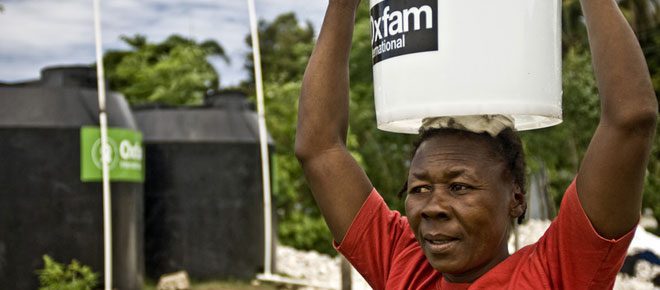Three years after the devastating earthquake that hit Haiti in January 2010, hundreds of thousands of people are still living under tents and tarpaulins and the country and its people continue to be very vulnerable.

Three years after the devastating earthquake that hit Haiti in January 2010, hundreds of thousands of people are still living under tents and tarpaulins and the country and its people continue to be very vulnerable.
“Thanks to the determination of the Haitian people and their government, and the generosity and solidarity of the public and governments around the world a lot of tangible progress has been made. However major challenges remain to rebuild Haiti after the earthquake and overturn decades of collective neglect and weak governance. Basically it´s three steps forward and two steps back,” said Andrew Pugh, Oxfam´s Country Director in Haiti.
Current needs
Approximately 358,000 people are still living in over 500 camps scattered around Port-au-Prince and its surrounding areas. Their access to basic services, such as sanitation, health care and education is very limited and they are extremely vulnerable to any future shocks.
“At its peak after the earthquake around 1.5 million people were living in some 1, 500 displacement camps around the city, so the numbers have decreased steadily in the past three years. Progress has also been made in reconstruction, with many thousands of homes built, nearly all the rubble cleared and the ongoing construction of roads and outdoor lighting” said Pugh.
The government has made efforts in the last year to lead the process of reconstruction. It proposed a return and relocation plan that has helped more than 53,000 people move back into neighborhoods, through cash grants, rental subsidies, and stepping up investments in neighborhoods to improve basic services. The government also established a housing policy, but the land available for reconstruction of homes is still insufficient and investment in basic services remains inadequate.
“What continues to be needed is a comprehensive, realistic long-term resettlement plan led by Haitians for Haitians. The international community has an important role to play, but it has to be a supportive role not an alternative role” said Pugh.
Progress
While Haiti slowly recovered from the aftermath of the earthquake and the outbreak of cholera which began in October 2010, it was hit by two tropical storms in 2012. Tropical Storms Isaac and Sandy aggravated the chronic vulnerability of people already living in precarious situations.
“With ongoing and recurrent challenges, the government and international community must do all it can to ensure that all of those who remain in camps are supported to relocate to secure housing with access to basic services,” said Pugh. “The Haitian government with the support of the international community must have a strategy to lessen the impact of future disasters that threaten the lives and livelihoods of both urban and rural families.”



